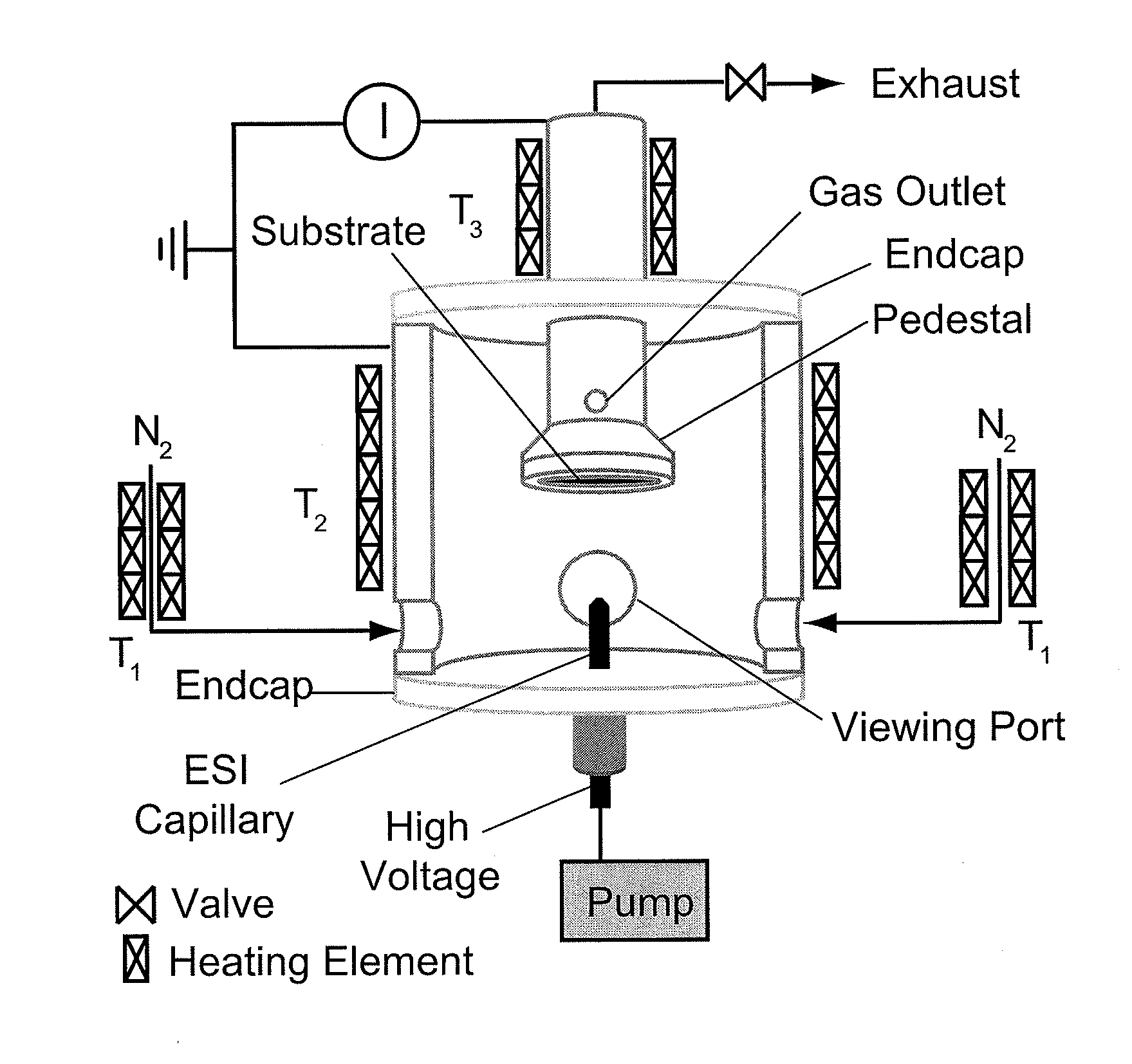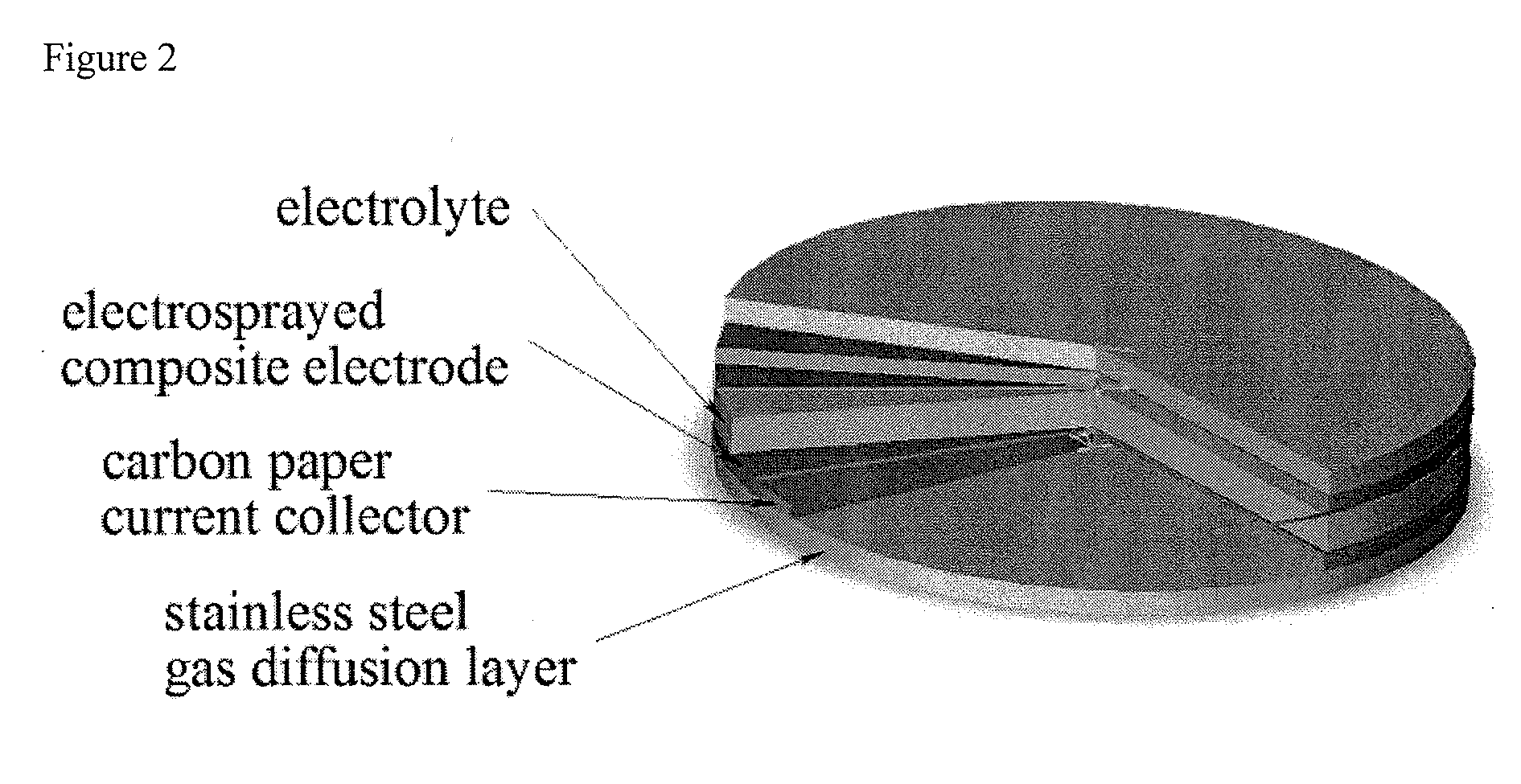Composite nanostructure solid acid fuel cell electrodes via electrospray deposition
a fuel cell and nano-structure technology, applied in the direction of electrochemical generators, instruments, transportation and packaging, etc., can solve the problems of inability to achieve a high density of tpbs as implied through the use of nanoparticles, and the method is largely limited
- Summary
- Abstract
- Description
- Claims
- Application Information
AI Technical Summary
Benefits of technology
Problems solved by technology
Method used
Image
Examples
example 1
Preparation of Solid Acid Nanostructure Material
[0069]Preparation of Aqueous Solution. The electrolyte material CsH2PO4 was prepared by precipitation from an aqueous solution of Cs2CO3 and H3PO4, and the synthesis confirmed by x-ray powder diffraction. The material was redissolved into water or a methanol-water mixture at a concentration of 10-20 g L−1 to serve as the electrospray solution. The methanol to water molar ratio was varied from 0:1 to 1:1 as a means of manipulating the solution conductivity and surface tension, parameters which can both influence the outcome of the electrospray process. In selected experiments various forms of Pt and carbon were added to the solution as a means of attaining their incorporation into the final electrode structure. These were platinum black (Alfa Aesar, Stk #43838, nom. ˜30 m2 / g); 40% platinum, on carbon black (Alfa Aesar, Stk #42204), and multiwalled carbon nanotubes (MWCNTs). The solids loadings in the solutions were 5 g L−1 for the plati...
PUM
| Property | Measurement | Unit |
|---|---|---|
| mol % | aaaaa | aaaaa |
| porosity | aaaaa | aaaaa |
| temperature | aaaaa | aaaaa |
Abstract
Description
Claims
Application Information
 Login to View More
Login to View More - R&D
- Intellectual Property
- Life Sciences
- Materials
- Tech Scout
- Unparalleled Data Quality
- Higher Quality Content
- 60% Fewer Hallucinations
Browse by: Latest US Patents, China's latest patents, Technical Efficacy Thesaurus, Application Domain, Technology Topic, Popular Technical Reports.
© 2025 PatSnap. All rights reserved.Legal|Privacy policy|Modern Slavery Act Transparency Statement|Sitemap|About US| Contact US: help@patsnap.com



